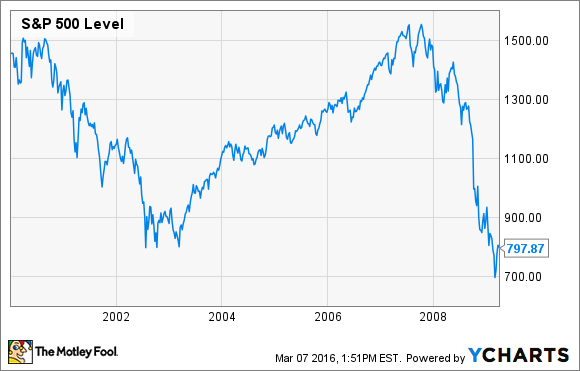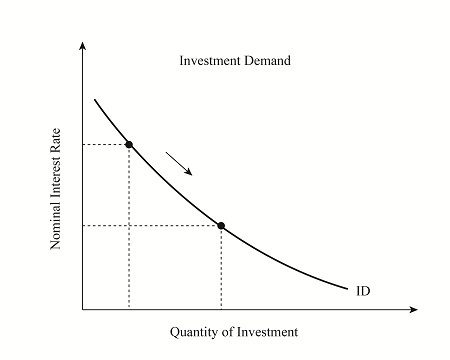Sometimes, when the good times roll, they can carry on unimpeded for months and years. This is what happened during a fruitful five year period between 2003 and 2007 when a bull market paraded through the world markets before the subsequent financial crash poleaxed investments across the globe.

(The Motley Fool illustrates the power of the mid-2000s bull market. Image: Motley Fool)
Investment demand curves can be a great way of mapping out the value of certain assets and checking on how demand increases as their respective values fluctuate.
Traditionally, investment demand curves take a downward sloping shape. This is because most assets generate more demand as they become cheaper. However, this curve can often become inverted when it comes to investing within bull markets. As prices rise, investors rush to generate more security. As prices fall, investors rush to get shot of their shares.

(Rudimentary illustration of how investment demand curves work. Image: Study)
While the image above illustrates a traditional investment demand curve, the opposite is true for bull markets. This is because investors can often be motivated by fear, and falling prices can spark too many concerns for individuals to seek investment opportunities.
Investment demand curves can be a little less predictable in bear markets, however, as many investors will likely be looking out for extremely cheap assets to invest in the hope of a rebound.
What is a bull market?
Broadly speaking, a bull market refers to an extended period of time where market prices continually rise – typically over months or years. This term can usually be found in reference to the stock market and has become increasingly common among cryptocurrency market speculators. It’s worth noting that other asset classes can also relate to bull markets – like with real estates, commodities and foreign or alternative currencies.
The exact definition of a bull market is subject to some debate, but the term typically refers to a 20% rise in stock prices following a 20% decline. It’s commonly accepted that a bull market ends once another 20% decline occurs.
Of course, due to this definition, it’s clear that we’ll be unable to know whether or not we have been trading in a bull market until after the event. But given our current period of financial uncertainty following the financial crash of 2008, we may only be able to anticipate another bull once the markets begin to steady themselves.
But how can we expect to make gains in a bull market? Is there an effective investment strategy to get the most out of a coming economic upturn? Here’s a selection of pointers that are designed to bring out maximum success within your investments.
Look for bargains
There are plenty of factors that dictate when a bull market is beginning to take shape. Naturally, they’re difficult to predict with certainty but investors can often make educated guesses as to when they’re buying into the start of a bull market.
As shares begin to rise, there will be plenty of time to keep on the lookout for investment opportunities with high potential that are slower to rise alongside similar markets.
If you find an asset that appears to be trading at a price that’s notably lower than its perceived market value, this could be a good place to start when attempting to build a healthy portfolio while the market grows.
Do your homework
Simply finding what appears to be a well-priced asset isn’t the beginning and end of your pursuit of good bull market investments. Be sure to do your homework and look into how the company you’re choosing is performing. Are their sales and earnings increasing year-on-year? Is there any sign of stagnation? Do the products and services on offer make sense to you? Can you see there being sustained demand for the company’s products?
Conducting a little bit of research can ensure that you avoid falling into any traps as you enter the market. Bull markets present investors with excellent opportunities to grow their portfolios, and while many assets will return profits during this time, it’s vital that you invest that little bit of extra time in identifying the prospective key performers.
Investigate your industries
To help inform your decision, it’s also vital that you don’t just focus on the company in question, but also zoom out a little bit and investigate the industry in which it’s based.
Take a moment to explore the industries that appear to be best placed to rebound as individuals and companies gain the confidence to spend their money again. In a market that’s gathering momentum, stocks that continually generate interest within popular industries like housing, automotive, industrial equipment and technology tend to be safe. However, the performance of specific industries change from time to time, so make sure you find a market that offers the best growth.
Have some introspection
Only enter the market once you’ve attained a strong understanding of your personal needs. No matter how much growth is being promised by the markets, it’s important to understand your own goals and ambitions for when you take the plunge and buy into your first asset.
Ask yourself important questions like ‘how old are you?’, ‘how far away is your retirement?’ The best way of investing with confidence is to understand the levels of profit you’re seeking to take to achieve your goals.
Remember that bull markets are characterised as much by their inevitable decline as they are for the long periods of growth. Be sure to know when to effectively take your profits before you’re forced into a panic sell.
Always diversify
Fundamentally, the best way of ensuring sustained growth alongside a bull market is through diversifying your portfolio.
You may have a strong number of shares within an industry that you feel has the best opportunities for growth over the coming years, but even during bull markets, there’s no guarantee that individual industries won’t suffer from external influences.
All it can take is for a widespread petrol crisis to negatively impact the automotive industry. Keep protected from potential rainy days by choosing a range of different investments and support them with other non-stock investments – like savings bonds and bank accounts.







![How Options Trading Works: The Ultimate Guide [2021]](https://daglar-cizmeci.com/wp-content/uploads/2020/12/Options-Trading-400x250.jpg)
